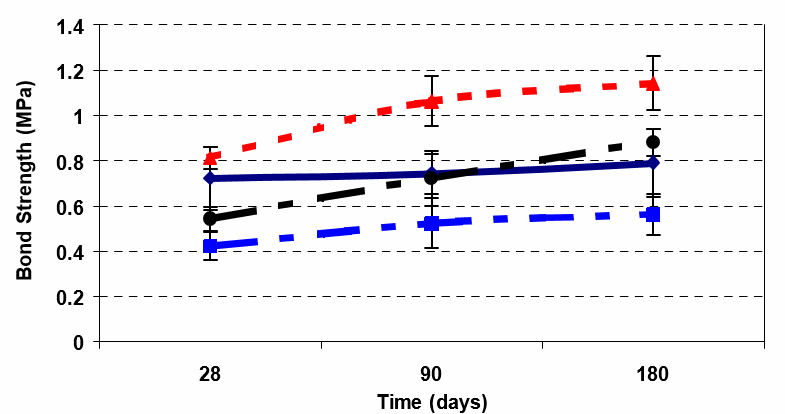M. Reda Taha[1] and N. G. Shrive[2]
- Ph.D., Structural Engineer, Stantec Consulting Ltd., Calgary, Canada (mreda@cadvision.com) (For correspondence)
- Killam Memorial Professor, Department of Civil Engineering, The University of Calgary, Calgary, Canada, (shrive@ucalgary.ca)
ABSTRACT
Poor bond and low bond strength is a major weakness of brickwork. This bond is affected by many interrelated factors associated with both masonry units and mortar. Lime (CH) is present in masonry mortar as a by-product of cement hydration, particularly at the mortar-unit interface where it produces a weak layer. Hence, we introduced varying amounts and types of pozzolans (fly ash types F and C, and slag) which can react with the lime to produce strong calcium silicate hydrates. The intent was to enhance the bond strength of the masonry by altering the microstructure of the mortar-unit interface. An experimental programme examining the bond strength of mortar-unit joints was therefore carried out, using mortars with and without pozzolans. Statistically significant increases in bond strength were measured at 28, 90 and 180 days with 20% substitution of fly ash in the cementitious materials. No increases were observed with slag. Introducing pozzolans as a mineral admixture in masonry mortar, besides being an environmentally positive feature, can therefore be beneficial from the rheological, economic and structural points of view.
Key words: Masonry bond, Bond dtrength, Pozzolans, Pozzolonic reaction and Water retentivity.
Morjts07



